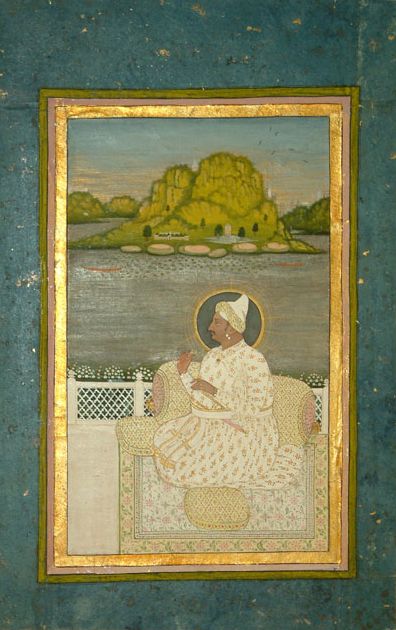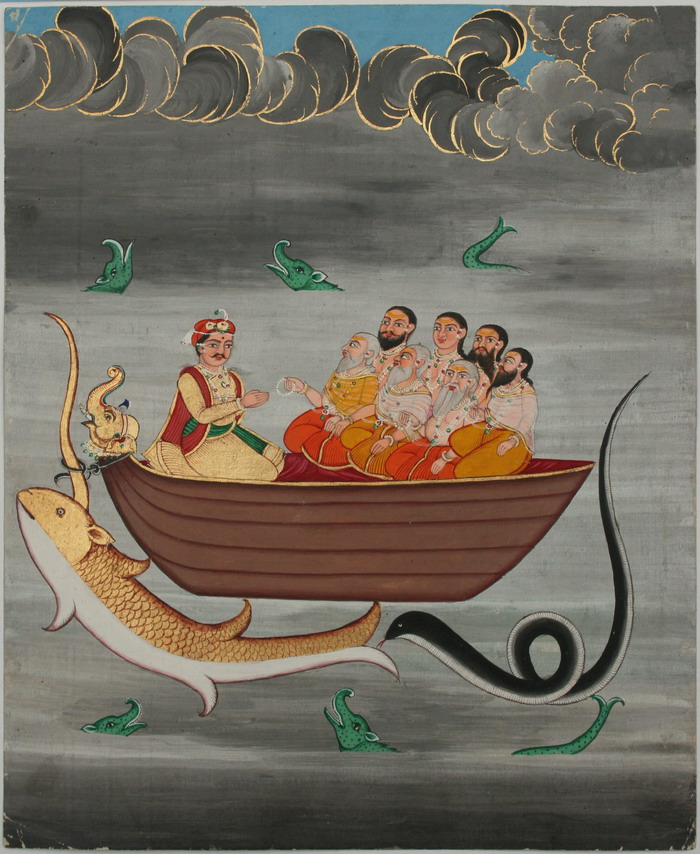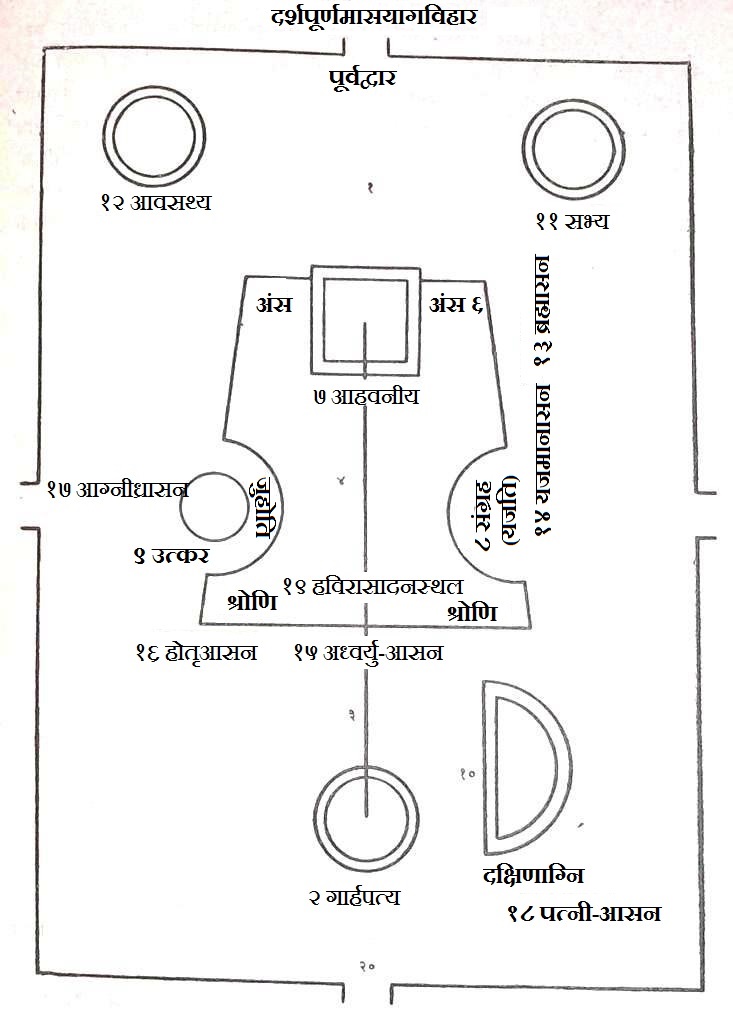|
Bharadwāja
Bharadvaja ( sa, भरद्वाज, IAST: ; also spelled Bharadwaja) was one of the revered Vedic sages (maharishi) in Ancient India. He was a renowned scholar, economist, grammarian and physician. He is one of the Saptarishis (seven great sages or Maharṣis). His contributions to ancient Indian literature, specifically the ''Rigveda'', provide significant insight into ancient Indian society. He and his family of students were the authors of the sixth book of the ''Rigveda''. In the epic ''Mahabharata'', Bharadwaja was the father of the teacher (guru) Droṇācārya, the instructor to Pandava and Kaurava princes. Bharadwaja is also mentioned in ''Charaka Samhita'', an authoritative ancient Indian medical text. Etymology The word Bharadvaja is a compound Sanskrit from ''"bhara(d) and vaja(m)"'', which together mean "bringing about nourishment". the name also lends itself to more than one yoga asana called Bharadvajasana (“nourishing pose”) named after the sage. His ... [...More Info...] [...Related Items...] OR: [Wikipedia] [Google] [Baidu] |
Pravaras
In Hindu culture, a ''Pravara'' (Sanskrit for "most excellent") is a system of identity, particularly a family line. Pravaras is a particular Brahmin's descent from a ''rishi'' (sage) who belonged to their ''gotra'' (clan). Importance in Hindu Dharma The Pravara has been extensively used in identifying one's ancestry and thus giving salutations to the listener. In vedic ritual, the importance of the pravara appears to be in its use by the ritualist for extolling his ancestry and proclaiming, "as a descendant of worthy ancestors, I am a fit and proper person to do the act I am performing." Generally, there are three, five or seven pravaras. The sacred thread yajnopavita worn on upanayana has close and essential connection with the concept of pravaras related to Brahmin gotra system. While tying the knots of sacred thread, an oath is taken in the name of each one of these three, five or seven of the most excellent rishis belonging to one's gotra. The full affiliation consists o ... [...More Info...] [...Related Items...] OR: [Wikipedia] [Google] [Baidu] |
Charaka Samhita
The ''Charaka Samhita'' (, “Compendium of ''Charaka''”) is a Sanskrit text on Ayurveda (Indian traditional medicine). Along with the ''Sushruta Samhita'', it is one of the two foundational texts of this field that have survived from ancient India. It is one of the three works that constitute the Brhat Trayi. The text is based on the ''Agnivesha Samhitā'', an eighth century BCE encyclopedic medical compendium by Agniveśa. It was revised by Charaka between 100 BCE and 200 CE and renamed ''Charaka Samhitā''. The pre-2nd century CE text consists of eight books and one hundred and twenty chapters. It describes ancient theories on human body, etiology, symptomology and therapeutics for a wide range of diseases. The ''Charaka Samhita'' also includes sections on the importance of diet, hygiene, prevention, medical education, and the teamwork of a physician, nurse and patient necessary for recovery to health. Authorship The ''Charaka Samhita'' states that the content of the ... [...More Info...] [...Related Items...] OR: [Wikipedia] [Google] [Baidu] |
Khatris
Khatri is a caste of the Indian subcontinent that is predominantly found in India, but also in Pakistan and Afghanistan. In the subcontinent, they were mostly engaged in mercantilistic professions such as banking and trade, they were the dominant commerical & financial administration class of Late-Medieval India some in Punjab often belonged to hereditary agriculturalist land-holding lineages, others were engaged in artisanal occupations such as silk production and weaving while some were scribes learned in Sanskrit and Persian too During the British colonial era, they also served as lawyers and engaged in administrative jobs in the colonial bureaucracy. Some of them served in the British Indian army after being raised as Sikhs. The Sikh religion was founded by Guru Nanak, a Bedi Khatri. Subequently, all the Sikh religious leaders or Gurus were Khatris. During the Sikh Empire, many Khatris formed the military vanguard of the Khalsa Army and it's administrative class as Dew ... [...More Info...] [...Related Items...] OR: [Wikipedia] [Google] [Baidu] |
Brahmin
Brahmin (; sa, ब्राह्मण, brāhmaṇa) is a varna as well as a caste within Hindu society. The Brahmins are designated as the priestly class as they serve as priests (purohit, pandit, or pujari) and religious teachers (guru or acharya). The other three varnas are the Kshatriya, Vaishya and Shudra. The traditional occupation of Brahmins is that of priesthood at the Hindu temples or at socio-religious ceremonies, and rite of passage rituals such as solemnising a wedding with hymns and prayers.James Lochtefeld (2002), Brahmin, The Illustrated Encyclopedia of Hinduism, Vol. 1: A–M, Rosen Publishing, , page 125 Traditionally, the Brahmins are accorded the highest ritual status of the four social classes. Their livelihood is prescribed to be one of strict austerity and voluntary poverty ("A Brahmin should acquire what just suffices for the time, what he earns he should spend all that the same day"). In practice, Indian texts suggest that some Brahmins historicall ... [...More Info...] [...Related Items...] OR: [Wikipedia] [Google] [Baidu] |
Gotra
In Hindu culture, the term gotra (Sanskrit: गोत्र) is considered to be equivalent to lineage. It broadly refers to people who are descendants in an unbroken male line from a common male ancestor or patriline. Generally, the gotra forms an exogamous unit, with marriage within the same gotra being regarded as incest and prohibited by custom. The name of the gotra can be used as a surname, but it is different from a surname and is strictly maintained because of its importance in marriages among Hindus, especially among castes. Pāṇini defines ''gotra'' as ''apatyam pautraprabhrti gotram'' (IV. 1. 162), which means "the word ''gotra'' denotes the descendance (or descendants), ''apatya'', of a couple consisting of a ''pautra'', a son and a ''bharti'', a mother, i.e. a daughter-in-law." (Based on Monier Williams Dictionary definitions.) When a person says "I am Vipparla-gotra", he means that he traces his descent to the ancient sage Vipparla by an unbroken male descent. ... [...More Info...] [...Related Items...] OR: [Wikipedia] [Google] [Baidu] |
Indra
Indra (; Sanskrit: इन्द्र) is the king of the devas (god-like deities) and Svarga (heaven) in Hindu mythology. He is associated with the sky, lightning, weather, thunder, storms, rains, river flows, and war. volumes/ref> Indra's myths and powers are similar to other Indo-European deities such as Jupiter, Perun, Perkūnas, Zalmoxis, Taranis, Zeus, and Thor, part of the greater Proto-Indo-European mythology. Indra is the most referred deity in the ''Rigveda''. He is celebrated for his powers, and as the one who killed the great evil (a malevolent type of asura) named Vritra, who obstructed human prosperity and happiness. Indra destroys Vritra and his "deceiving forces", and thereby brings rains and sunshine as the saviour of mankind. He is also an important deity worshipped by the Kalash people, indicating his prominence in ancient Hinduism. Indra's significance diminishes in the post-Vedic Indian literature, but he still plays an important role in various m ... [...More Info...] [...Related Items...] OR: [Wikipedia] [Google] [Baidu] |
Ashtavakra
Ashtavakra ( sa, अष्टावक्रः, ) or Ushtaavukruhu is a revered Vedic sage in Hinduism. His name literally means "eight deformities", reflecting the eight physical deformities he was born with. His maternal grandfather was the Vedic sage Aruni, his parents were both Vedic students at Aruni's school. Ashtavakra studied, became a sage and a celebrated character of the Hindu Itihasa epics and Puranas. Ashtavakra is the author of the text '' Aṣṭāvakra Gītā'', also known as ''Aṣṭāvakra Saṃhitā'', in Hindu traditions. The text is a treatise on Brahman and Atman. History Little is known about the life or century in which Ashtavakra actually lived, except for the accounts found in the major Indian Epics (the ''Ramayana'' and the ''Mahabharata'') and the Puranas. The legends state that sage Aruni, mentioned in the Chāndogya Upaniṣad, ran a school ( Āśrama) teaching the Vedas. Kahoḍa was one of his students, along with Aruni's daughter Sujata. Ar ... [...More Info...] [...Related Items...] OR: [Wikipedia] [Google] [Baidu] |
Rishi
''Rishi'' () is a term for an accomplished and enlightened person. They find mentions in various Vedic texts. Rishis are believed to have composed hymns of the Vedas. The Post-Vedic tradition of Hinduism regards the rishis as "great yogis" or "sages" who after intense meditation (tapas) realized the supreme truth and eternal knowledge, which they composed into hymns.Hartmut Scharfe (2002), Handbook of Oriental Studies, BRILL Academic, , pp. 13–15. The term appears in Pali literature as Ishi and in Buddhism, they can be either Buddhas, Paccekabuddhas, Arahats or a monk of high rank. Etymology According to Indian tradition, the word may be derived from two different meanings of the root 'rsh' (). Sanskrit grammarians derive this word from the second meaning: "to go, to move". V. S. Apte gives this particular meaning and derivation, and Monier-Williams also gives the same, with some qualification. Another form of this root means "to flow, to move near by flowing". (All the ... [...More Info...] [...Related Items...] OR: [Wikipedia] [Google] [Baidu] |
Buddha
Siddhartha Gautama, most commonly referred to as the Buddha, was a śramaṇa, wandering ascetic and religious teacher who lived in South Asia during the 6th or 5th century BCE and founded Buddhism. According to Buddhist tradition, he was born in Lumbini, in what is now Nepal, to royal parents of the Shakya clan, but Great Renunciation, renounced his Householder (Buddhism), home life to live as a wandering ascetic ( sa, śramaṇa). After leading a life of begging, asceticism, and meditation, he attained Enlightenment in Buddhism, enlightenment at Bodh Gaya in what is now India. The Buddha thereafter wandered through the lower Indo-Gangetic Plain, teaching and building a Sangha, monastic order. He taught a Middle Way between sensual indulgence and severe asceticism, leading to Nirvana (Buddhism), Nirvana, that is, Vimutti, freedom from Avidyā (Buddhism), ignorance, Upādāna, craving, Saṃsāra (Buddhism), rebirth, and suffering. His teachings are summarized in the Noble ... [...More Info...] [...Related Items...] OR: [Wikipedia] [Google] [Baidu] |
Digha Nikaya
Digha is a seaside resort town in the state of West Bengal, India. It lies in Purba Medinipur district and at the northern end of the Bay of Bengal. It has a low gradient with a shallow sand beach. It is a popular sea resort in West Bengal. History Originally, there was a place called ''Beerkul'', where Digha lies today. This name was referred in Warren Hastings's letters (1780) as Brighton of the East. An English businessman John Frank Snaith started living here in 1923 and his writings provided a good exposure to this place. He convinced West Bengal Chief Minister Bidhan Chandra Roy to develop this place to be a beach resort. An old church can be seen near the Old Digha Main gate. This place is also known as Alankarpur Digha. A new mission has been developed in New Digha which is known as Sindhur Tara which is beside Amrabati Park its a Church where it is possible to wish for the welfare of family and loved ones. The best way to visit is to book a local van rickshaw. There ar ... [...More Info...] [...Related Items...] OR: [Wikipedia] [Google] [Baidu] |
Atri
Atri ( sa, अत्रि) or Attri is a Vedic sage, who is credited with composing numerous hymns to Agni, Indra, and other Vedic deities of Hinduism. Atri is one of the Saptarishi (seven great Vedic sages) in the Hindu tradition, and the one most mentioned in its scripture Rigveda. The fifth Mandala (Book 5) of the Rigveda is called the Atri Mandala in his honour, and the eighty seven hymns in it are attributed to him and his descendants. Atri is also mentioned in the Puranas and the Hindu epics of the Ramayana and the Mahabharata. Legend Atri is one of the seven great Rishi or Saptarshi along with Marichi, Angiras, Pulaha, Kratu, Pulastya and Vashistha. According to the legends of the Vedic era, sage Atri was married to Anasuya Devi. They had three sons, Dattatreya, Durvasa and Chandra. As per divine account, he is the last among the seven saptharishis and is believed to have originated from the tongue. The wife of Atri was Anasuya, who is considered one of the seven ... [...More Info...] [...Related Items...] OR: [Wikipedia] [Google] [Baidu] |
Shatapatha Brahmana
The Shatapatha Brahmana ( sa, शतपथब्राह्मणम् , Śatapatha Brāhmaṇam, meaning 'Brāhmaṇa of one hundred paths', abbreviated to 'SB') is a commentary on the Śukla (white) Yajurveda. It is attributed to the Vedic sage Yajnavalkya. Described as the most complete, systematic, and important of the Brahmanas (commentaries on the Vedas), it contains detailed explanations of Vedic sacrificial rituals, symbolism, and mythology. Particularly in its description of sacrificial rituals (including construction of complex fire-altars), the Shatapatha Brahmana (SB) provides scientific knowledge of geometry (e.g. calculations of pi and the root of the Pythagorean theorem) and observational astronomy (e.g. planetary distances and the assertion that the Earth is circular) from the Vedic period. The Shatapatha Brahmana is also considered to be significant in the development of Vaishnavism as the origin of several Puranic legends and avatars of the RigVedic god Vi ... [...More Info...] [...Related Items...] OR: [Wikipedia] [Google] [Baidu] |

_Bhumi_Puja%2C_yajna.jpg)
.jpg)
.jpg)

.jpg)


